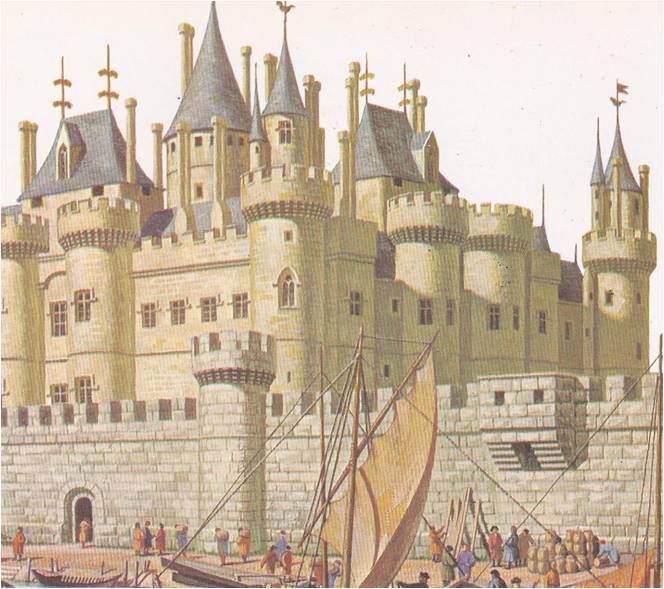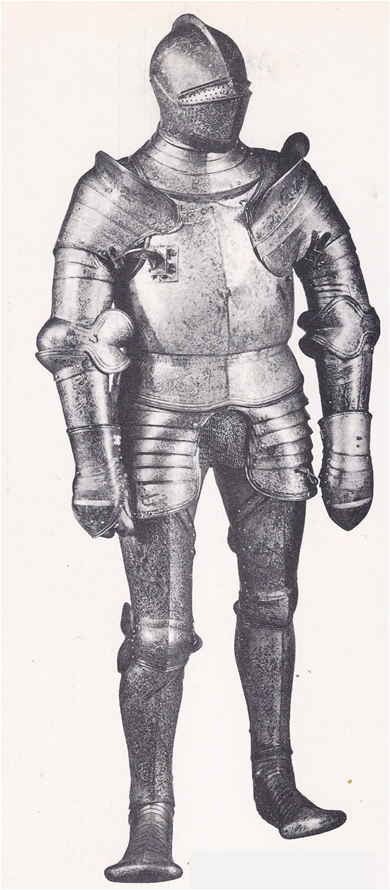In all Europe there was no greater admirer of Italy than Francis I, king of France. Francis practiced Italian manners in his court, built Italian palaces in his parks and kept Italian books in his library. He collected Italian paintings and the artists who painted them. Indeed, the king admired Italy so much that he wanted to conquer it all. Francis was not the first ruler to feel these strong Italian longings. In England, Spain and Germany, kings and princes were busily remodeling their courts, their castles and themselves in the Italian manner. Though the little states of Italy were growing poor and weak, it seemed that every richer, stronger nation in Europe was struggling to catch up with them. Actually, it was the Renaissance that Francis and the others were striving to match — the displays of splendour, the well-bred elegance of the courts, the wisdom, and of course, the riches. Western Europe was waking up to the new age, after long years of poverty, confusion and fear brought on by the wars and plagues that destroyed the old world of chivalry. Through the Alps from Italy came an army of peaceful invaders, merchants first, then artists and men of learning. Along with their bolts of wool and Silk, their books and paintings, they brought the Renaissance. The Europeans, gradually stirring with the excitement of the new age, turned to Italy where its wonders had first appeared. Some sent their scholars and artists to Italy to study. Some, like the French, sent their troops. In 1494, little Charles VIII of France clapped a gilded helmet over his shaggy red hair, marched down the peninsula and conquered Naples. For three months he paraded about his new city, while four embarrassed Neapolitan noblemen trotted beside him, holding a golden canopy over …
Read More »Milan, City of Splendour and War 1277-1515
Milan’s most important business street had no displays of velvet cloaks, bright bolts of silk, or cloth-of-gold. It was a dusty, smoky street, made hot by the fires of forges and filled with the din of hammers shaping steel — the Street of the Armourers. Milan made the finest armour in the world. In the Middle Ages, the crusaders came there for chain mail and it was said that entire armies were outfitted in a few days. Later, the fashions of war changed. Knights wore heavy suits of jointed steel plates that covered them from head to toe and elegant helmets, gilded, engraved and topped with plumes. The Milanese armourers became artists at molding and carving metal, their sales men were welcomed in every court in Europe and the Street of the Armourers became busier than ever. Armour was the right specialty for Milan, for the city and its rulers seemed to specialize in everything warlike and violent. The dukes of Milan were iron-fisted tyrants, who loved displays of splendour and sometimes cruelty. They did not hide their power like the cautious Medici in Florence. Indeed, they made a show of their strength and wealth. It discouraged invaders, rivals and over-ambitious relatives. The dukes’ domain was rich and as large as any state in Italy. The fertile plain of Lombardy, which lay between the Apennine Mountains and the Alps, attracted as many would-be conquerors as farmers. The prosperous little Lombard towns that the dukes overpowered were quarrelsome and the noblemen of Lombardy never stopped stirring up revolts. To hold on to their dukedom, the rulers of Milan employed the toughest warriors in Italy. They frightened their subjects with harsh laws, rewarded them with pageants and impressed them with magnificent palaces. Splendour, fear and power — these were the specialties of …
Read More »The Hundred Years War 1326-1477
THE LONG STRUGGLE between France and England, known to history as the Hundred Years’ War, was not really a war — and it lasted more than a hundred years. Rather than a war, it was a series of separate battles, with periods of uneasy peace between and it lasted from 1338 to 1453. It was time of misery for both sides, but the French lost more men and saw much of their land devastated. By the end of the Hundred Years’ War, important changes had taken place in both countries. In France, the years of conflict weakened the power of the nobility and led to the rise of a strong middle class. Warfare would never be the same; the English victories showed that mounted knights, weighed down by heavy armour‚ were no match for archers with longbows and the final battles were decided by artillery. The cause of the war was that the English still held the Duchy of Aquitaine, a rich land in southwestern France and were determined not to lose it. The French were equally determined to drive them out. A further complication was the situation in Flanders. The English sold raw wool to Flemish manufacturers, who wove it into cloth and sold a good part of it back to the English. This trade was important to England and even more so to Flanders and both countries were anxious that nothing should happen to disturb it. The English also kept a watchful eye on the Flemish ports, which could serve as a base for a French attack on England or an English attack on the continent. Flanders was not a completely independent state; its ruler, the Count of Flanders, owed allegiance to the king of France. England tried to destroy the count’s authority by stirring up the Flemish …
Read More »


